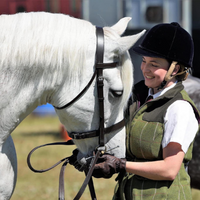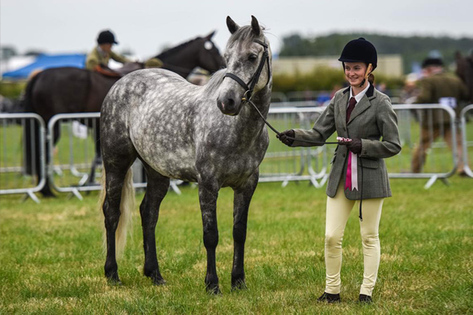
Are You & Your Horse Ready For Bitting Advice? The Steps You Need To Consider First
Equestrian Advice & Guides All Disciplines
Build your business profile for FREE and expose your services to thousands of potential clients!
Create my profile now!
The showing ring can be intimidating if you have never taken part before, but don’t be put off! It’s a lot of fun and a great way to make new friends. Here are some quick tips to help you kickstart your showing journey!
Turnout depends on what type of horse or pony you’re riding.
Traditionally, for your horse, Havana tack is correct, however at a local level you don’t need to be buying a whole new saddle for your pony! Ideally, a saddle that shows off your horse’s shoulder (straight cut) is a good idea but again, for local level, any saddle shape is fine. Working Hunter horses and ponies are permitted to wear a jumping saddle and martingale. Your saddle cloth should be shaped to your saddle, match the colour of your saddle and ideally be as hidden as possible – you certainly won’t get marks for having the largest, fluffiest square saddle pad in the ring!
Be aware that in certain classes only snaffle bits are permitted, such as beginners’ classes. Be sure to check the schedule in advance to ensure you have the right bit and make sure your horse is used to it before the day!

For yourself, tweed jackets are a fairly common sight on the showground and there are a huge range of colours to choose from. A quick trick for a coordinated look is to match the check colour in your tweed jacket to your tie! If you’re showing a Mountain and Moorland (Native) pony, you should always be in tweed. Jodhpurs can be most shades of cream or yellow but never white, as this is for showjumpers. Adults should wear long boots (that match the colour of your tack!) whereas children should be in jodhpur boots with clips.
 Any horse or pony can be clipped, however, if you’re showing in a Mountain and Moorland class, be sure to turn your horse out to breed standards. If feathers are to be left untouched but your horse needs to be clipped, a good option is to blend the legs so you can remove most of the fur but leave the necessities on.
Any horse or pony can be clipped, however, if you’re showing in a Mountain and Moorland class, be sure to turn your horse out to breed standards. If feathers are to be left untouched but your horse needs to be clipped, a good option is to blend the legs so you can remove most of the fur but leave the necessities on.
If you are showing a Working / Show cob, they should be hogged and not plaited. All feathers should be removed and they should be completely trimmed/clipped out, whereas a traditional cob is left in all their feathery glory! Traditional cobs are left with full flowing manes and tails. Native cobs should have their manes shaped but not pulled showjumper-short. Mountain and Moorlands should again be shown to breed type, for example, Connemara’s should have a shaped/tidied mane, pulled to around 8 inches. Most other horses and ponies are fine to be traditionally pulled and plaited. You can plait your horse’s tail, though it is more common for ridden horses and ponies to have neatly pulled tails.

For higher level showing, you are sometimes given a set show to learn and display on the day, however, for local level and other shows, you can make it up yourself. You should keep it short and sweet, ensuring you show a halt (ideally square!) to begin with and a walk, trot and canter on both reins.
 To finish, show an extended canter / gallop up the long side of the arena – this doesn’t mean throw the reins at the horse and have a good bolt around, it should be a controlled extension that you can easily stop. Halt back in front of your judge and acknowledge them – a smile always helps! If you are showing in a Veteran class, you are not expected to gallop and will be marked down if you show extension.
To finish, show an extended canter / gallop up the long side of the arena – this doesn’t mean throw the reins at the horse and have a good bolt around, it should be a controlled extension that you can easily stop. Halt back in front of your judge and acknowledge them – a smile always helps! If you are showing in a Veteran class, you are not expected to gallop and will be marked down if you show extension.
At higher level shows and qualifiers, there will sometimes be a Ride Judge, so make sure any capable rider can get on and work through all paces on your horse. The judge won’t take kindly to being chucked off in the corner because your horse is only used to being ridden by you... and trust me, that happens!
You might have seen people riding with various coloured ribbons in their horses’ tails. Each colour represents a different thing and it’s worth knowing what!
Red Ribbon = This horse kicks
Green Ribbon = This horse is young or inexperienced, please give it room
Blue OR White Ribbon = Stallion (though stallions may also wear a stallion tag on their bridle!)
Ring Etiquette is also important;

Most importantly, have fun! Remember that winning isn’t everything and it can be helpful – especially at local level – to politely ask your judge for feedback. Usually they’re more than happy to have a quick chat to give you some tips for next time!

